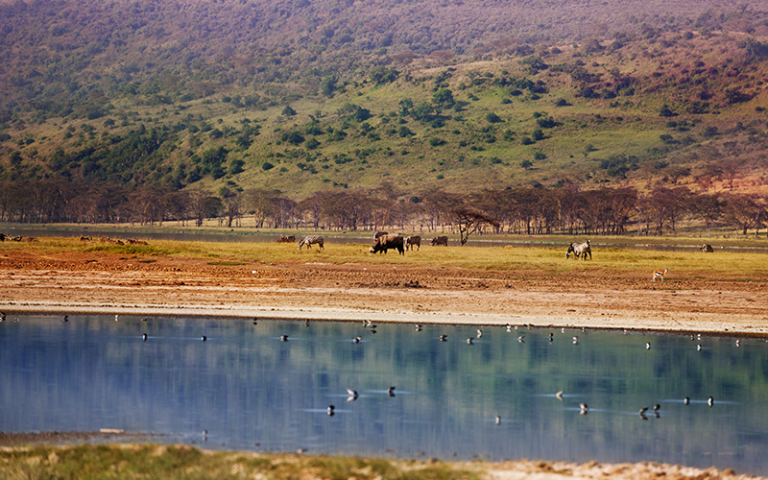Biodiversity indicators to inform international conservation policy
The IUCN Red List, which is based on criteria developed by researchers at UCL and IoZ, has become a key information source for monitoring the status of global biodiversity.

12 April 2022
The Red List of Threatened Species was established in 1964, and has become the world’s most comprehensive source of information on extinction risk. Based on UCL and Institute of Zoology (IoZ) research, it has evolved into a vital tool in species conservation and biodiversity. It underpins several UN bodies’ work around the world, for example the UN Convention on Biological Diversity.
UCL and IoZ have continued to develop the science-based metrics that underpin the Red List to address some of its original limitations and better address the global biodiversity crisis. One of these is that while over 100,000 species have now been assessed using the criteria, this only represents a small sample of all species (estimated at closer to ten million) and is biased towards well-studied vertebrates.
UCL and IoZ researchers developed methods to track changes in extinction risk over time and a sampling approach for wider taxonomic coverage of the Red List Index (RLI): the Sampled Red List Index (SRLI). The SRLI assesses representative samples of species from a broader set of groups (including invertebrates and plants) in a time- and cost-effective manner. They have also developed a method to simulate climate change impacts, which are widely considered one of the most important threats to biodiversity and demonstrated that they can be accounted for using Red List criteria such as occupied area and population size.
This has allowed the IUCN to assess the extinction risk due to climate change of individual species. For example, the IUCN listed Coffee arabica, which is a highly valuable crop, as endangered in 2018 following review of climate change impact models by an advice group chaired by a UCL researcher.
While the RLI records changes in species richness, it is a poor measure of changes in the population of species in the wild. IoZ and UCL researchers developed the Living Planet Index (LPI), which uses statistical methods to track trends in large sets of data about wildlife population changes and identify risks.
This UCL and IoZ research underpins the monitoring of biodiversity by several international treaty organisations and conservation NGOs, such as the IPBES and WWF. The LPI and SRLI have both been used to track progress towards meeting the UN Convention on Biological Diversity (CBD) targets in 2014 and 2020. They are quoted by the UN Global Biodiversity Outlook report as authoritative measures of the speed of biodiversity decline. The two indices have also been highlighted as indicators for the post-2020 global target framework, and these in turn have led to domestic and intergovernmental policy changes on every continent, including the Arctic.
Research synopsis
Biodiversity Indicators to inform international conservation policy
The IUCN Red List, which is based on criteria developed by researchers at UCL and IoZ, has become a key information source for monitoring the status of global biodiversity. Over the past fifteen years IoZ and UCL researchers have expanded the Red List’s science-based metrics for measuring biodiversity and species’ conservation status to include more species and risk factors. These indicators are now used by several United Nations (UN) bodies to measure conservation status around the world and to track progress toward international conservation targets.
Research team: Professor Georgina Mace, Professor Richard Pearson, Dr Robin Freeman, Dr Ben Collen and Dr Tim Newbold.
Links
- Tribute to Professor Georgina Mace
- Professor Richard Pearson’s academic profile
- Dr Robin Freeman’s academic profile
- Dr Tim Newbold’s academic profile
- Tribute to Dr Ben Collen
- Institute for Zoology
- UCL Division of Biosciences
- UCL Faculty of Life Sciences
- UCL Faculty of Life Sciences REF 21
Image
- Image credit: iStock / SerrNovik
 Close
Close

